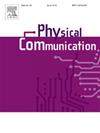多模式传感系统概述及 ISAC 技术在 SHM 中的潜力
IF 2
4区 计算机科学
Q3 ENGINEERING, ELECTRICAL & ELECTRONIC
引用次数: 0
摘要
本文章由计算机程序翻译,如有差异,请以英文原文为准。
An overview of multi-modal sensing systems and the potential of ISAC technologies in SHM
Structural health monitoring (SHM) is vital for ensuring the safety and durability of infrastructure. Conventional SHM systems, which rely on various sensors to track deformations and vibrations in steel and concrete structures, often face challenges such as complex installation and labor-intensive, time-consuming monitoring processes. Integrated sensing and communication (ISAC) technology offers a transformative solution by enabling dense sensing networks without the need for additional installations. In this paper, we classify current SHM systems into two key approaches to leverage ISAC: the image assessment method, which evaluates structural safety through scanning and imaging techniques, and the reference point assessment method, which monitors specific points within a structure to assess its overall health. We review recent advancements in both approaches, identify limitations in existing SHM systems, and examine how ISAC can address these challenges. Additionally, we propose future research directions to enhance the integration of ISAC into SHM, emphasizing its potential to revolutionize infrastructure safety monitoring.
求助全文
通过发布文献求助,成功后即可免费获取论文全文。
去求助
来源期刊

Physical Communication
ENGINEERING, ELECTRICAL & ELECTRONICTELECO-TELECOMMUNICATIONS
CiteScore
5.00
自引率
9.10%
发文量
212
审稿时长
55 days
期刊介绍:
PHYCOM: Physical Communication is an international and archival journal providing complete coverage of all topics of interest to those involved in all aspects of physical layer communications. Theoretical research contributions presenting new techniques, concepts or analyses, applied contributions reporting on experiences and experiments, and tutorials are published.
Topics of interest include but are not limited to:
Physical layer issues of Wireless Local Area Networks, WiMAX, Wireless Mesh Networks, Sensor and Ad Hoc Networks, PCS Systems; Radio access protocols and algorithms for the physical layer; Spread Spectrum Communications; Channel Modeling; Detection and Estimation; Modulation and Coding; Multiplexing and Carrier Techniques; Broadband Wireless Communications; Wireless Personal Communications; Multi-user Detection; Signal Separation and Interference rejection: Multimedia Communications over Wireless; DSP Applications to Wireless Systems; Experimental and Prototype Results; Multiple Access Techniques; Space-time Processing; Synchronization Techniques; Error Control Techniques; Cryptography; Software Radios; Tracking; Resource Allocation and Inference Management; Multi-rate and Multi-carrier Communications; Cross layer Design and Optimization; Propagation and Channel Characterization; OFDM Systems; MIMO Systems; Ultra-Wideband Communications; Cognitive Radio System Architectures; Platforms and Hardware Implementations for the Support of Cognitive, Radio Systems; Cognitive Radio Resource Management and Dynamic Spectrum Sharing.
 求助内容:
求助内容: 应助结果提醒方式:
应助结果提醒方式:


